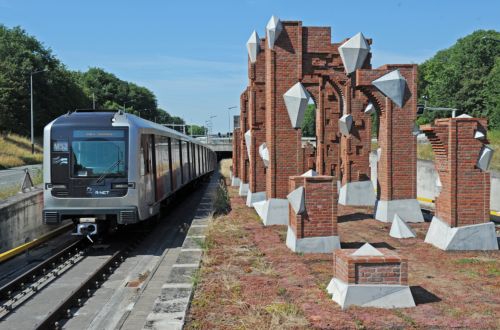Commercial operation began the following day, when Amsterdam’s second underground heavy metro line became part of the city’s extensive public transport network.
The new line starts at North station and crosses beneath the IJ waterway to reach Central station where it connects with the existing metro, tram and mainline services. The line then heads south beneath the city centre to Amsterdam South, where there is another connection with urban and mainline rail services.During the initial phase of operations, services are operating at six-minute headways with a journey time of 15 minutes between the terminus stations, significantly faster than other modes, including bicycle. Up to 121,000 passengers a day are forecast to use the line.
The project was approved by Amsterdam city council and the Dutch parliament in 1999 and construction began in January 2003, with the support of a €1bn grant from the Dutch government. However, the project was beset by complications, including the poor ground conditions, the large number of waterways in Amsterdam and theneed to protect buildings in the historic city centre. There was also a precondition that buildings could not be demolished.
Opening was subsequently pushed back to October 2017, and was later delayed again to July 2018. The final bill for the project was around €3.1bn.
The line has seven new stations, while an eighth station has been prepared for opening at a later date.

Services are operated by Alstom Series M5 metro trains. Alstom has also supplied moving block signalling based on its Urbalis 400 CBTC technology. This was due to be rolled out on existing metro lines before the North-South Line, but delays to the project mean the new line is the first to be equipped with CBTC. The rollout of Urbalis 400 is due to be completed on the remainder of the network next year.
With the opening of the new line, the public transport network in Amsterdam has undergone fundamental changes, with the alteration or withdrawal of many tram and bus routes. The aim of the recast is to move as many tram and bus passengers as possible over to the metro, even though this will mean more interchanges for 25% of passengers and increased travel times between some parts of the network.
A more detailed description of the North-South Line will appear in the October issue of IRJ.

